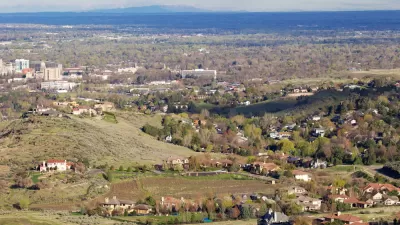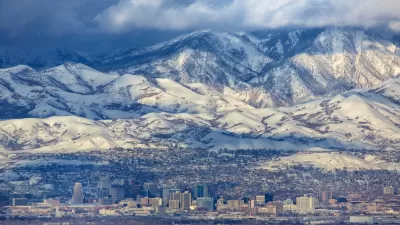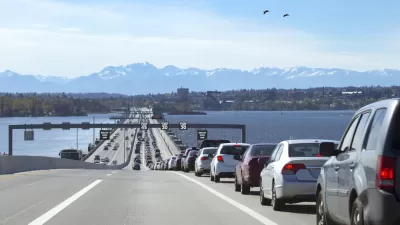A recent report calls for the region stretching from Oregon to British Columbia to think big about accommodating expected population growth. The report's recommendation to build four new, large cities isn't universally accepted, however.

[Updated December 1, 2020. Headline adjusted and details added to correctly report the forecasted population growth.]
Joshua McNichols reports that a new report by the Cascadia Innovation Corridor proposes four new, large cities for the region to accommodate all the growth expected in the near time future.
"Former Washington Governor Christine Gregoire, along with her peers around the region, recently published a study that argues the Northwest has a problem -- it needs four new large cities. Otherwise, there won't be enough room," writes McNichols to explain the Cascadia Vision 2050 report. The new cities would be home to "300,000 to 400,000 people, along with 200,000 jobs each, built densely around fast mass transit."
"The study’s authors don’t say exactly where these new cities should go, except they need to be at least 40 miles outside existing urban areas, in order to keep land costs down. They recommend that by 2035, the region should have found spots for them and started digging," adds McNichols.
The other option, according to the report, is for existing cities to "bulldoze" 40 percent of existing single-family homes and replace them with more density. That idea is much more palatable to Doug Trumm, writing for The Urbanist in response to the both the report and the coverage of the report by McNichols.
Trumm suggests that new zoning could help existing cities manage expected growth without needing to plan new communities from scratch. Trumm faults the report for saying new density requires bulldozing anything. "For one, converting oneplexes (detached single-family homes) to fourplexes would not necessarily require demolitions. Accessory dwelling units (ADU) offer a way to add density without teardowns. Seattle, Tacoma, Burien, Olympia, and several other cities already laws permitting and promoting ADU conversion," writes Trumm.
Not only is that language inflammatory, according to Trumm, but so is the 40 percent figure cited in the report.: "the 40% figure sounds dramatic but over 30 years that only requires about 1.2% of single family homes to be converted to fourplexes per year."
FULL STORY: Pacific Northwest needs 4 new cities on undeveloped land, report says

Montreal Mall to Become 6,000 Housing Units
Place Versailles will be transformed into a mixed-use complex over the next 25 years.

Planetizen Federal Action Tracker
A weekly monitor of how Trump’s orders and actions are impacting planners and planning in America.

DARTSpace Platform Streamlines Dallas TOD Application Process
The Dallas transit agency hopes a shorter permitting timeline will boost transit-oriented development around rail stations.

Study: 4% of Truckers Lack a Valid Commercial License
Over 56% of inspected trucks had other violations.

Chicago Judge Orders Thousands of Accessible Ped Signals
Only 3% of the city's crossing signals are currently accessible to blind pedestrians.

Philadelphia Swaps Car Lanes for Bikeways in Unanimous Vote
The project will transform one of the handful of streets responsible for 80% of the city’s major crashes.
Urban Design for Planners 1: Software Tools
This six-course series explores essential urban design concepts using open source software and equips planners with the tools they need to participate fully in the urban design process.
Planning for Universal Design
Learn the tools for implementing Universal Design in planning regulations.
City of Mt Shasta
City of Camden Redevelopment Agency
City of Astoria
Transportation Research & Education Center (TREC) at Portland State University
US High Speed Rail Association
City of Camden Redevelopment Agency
Municipality of Princeton (NJ)





























